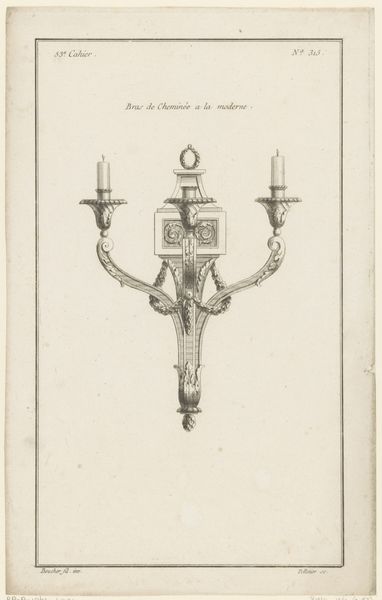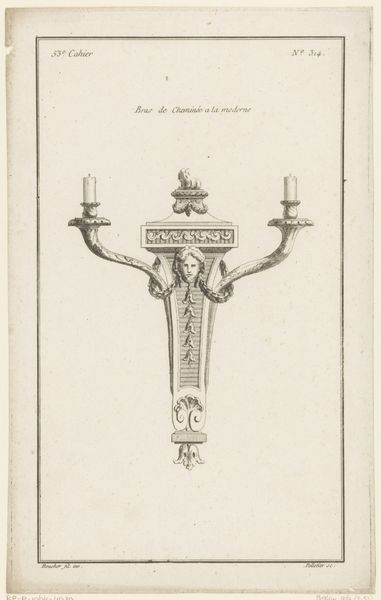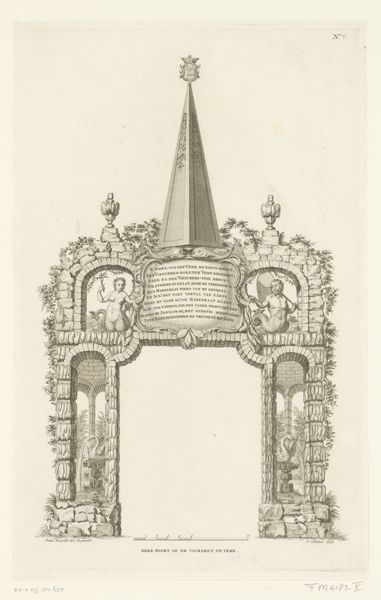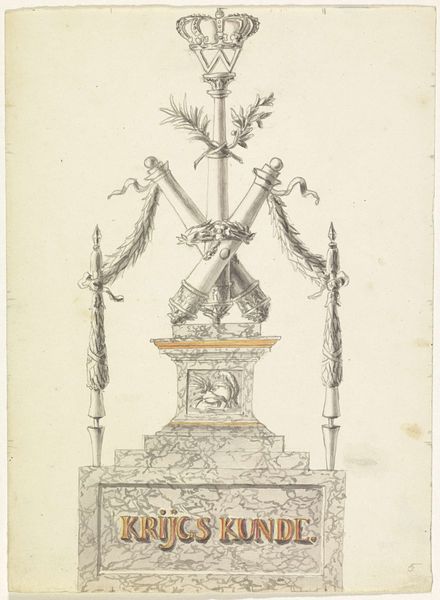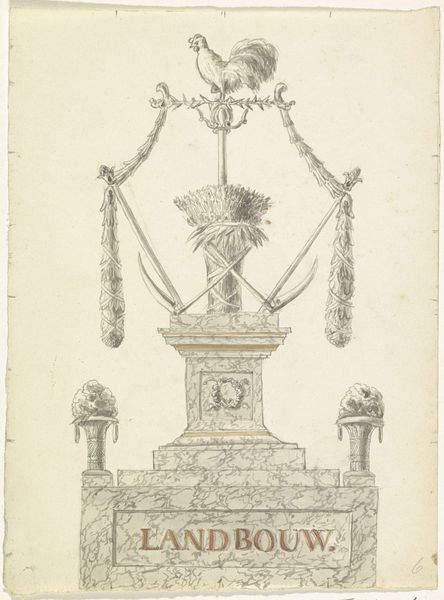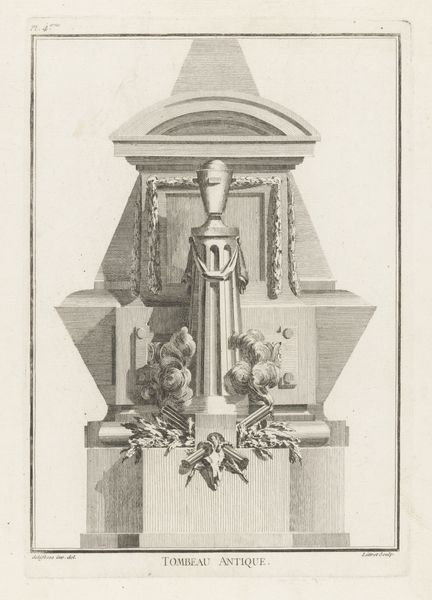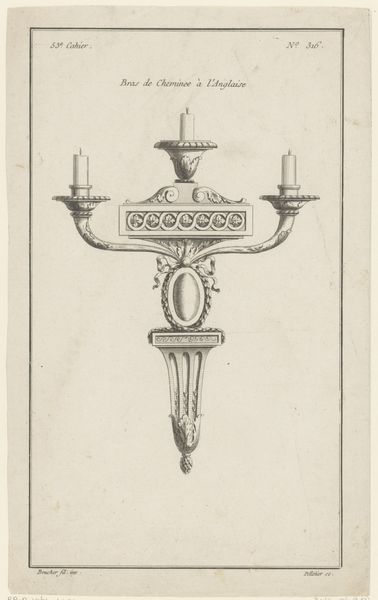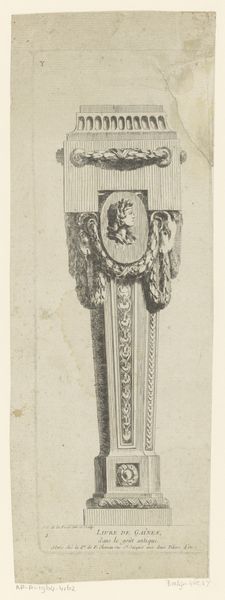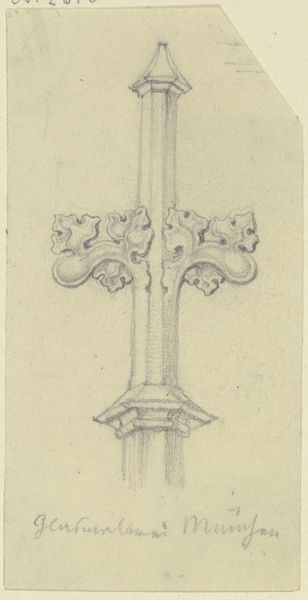
Fire Dogs which belonged to King Henry VIII, formerly found at Leeds Castle 1850 - 1900
0:00
0:00
drawing, print, engraving
#
drawing
#
medieval
# print
#
19th century
#
history-painting
#
decorative-art
#
engraving
Dimensions: sheet: 4 7/16 x 2 15/16 in. (11.3 x 7.4 cm)
Copyright: Public Domain
Curator: Let's turn our attention to this print titled, "Fire Dogs which belonged to King Henry VIII, formerly found at Leeds Castle." It dates roughly from 1850 to 1900. Editor: They certainly look sturdy. My first thought is how formidable they appear, even in this two-dimensional form. It gives a strong impression of power, that mass and those assertive lines. Curator: Absolutely. The image itself is fascinating. It provides insight into the perceived opulence of Tudor England and how earlier eras sought to connect to the royal past. This rendering would have likely circulated amongst those interested in antiquities. Editor: The Tudor rose and fleur-de-lis jump out—those symbols are powerfully linked with concepts of English and French royalty. To see them juxtaposed so directly is, well, very Henry VIII! Asserting dominance over traditions. Curator: Exactly! Symbols of authority, inherited legitimacy… all channeled, and to some degree, reinvented by Henry's court. The drawing underscores how material culture supported political claims. We see it reproduced and disseminated during an era preoccupied with England's imperial and aristocratic history. Editor: And consider how hearth and home become connected to concepts of kingship through such details. It's like visual propaganda quietly influencing ideas about power structures. The suggestion is that even the domestic sphere is touched by the monarch’s authority and influence. Curator: That's precisely what strikes me about this piece; it bridges a kind of personal intimacy—fireside comfort—with displays of national identity. This was circulated widely, shaping public opinion on England's historic royal imagery and its social structures. Editor: Reflecting on this print, I’m struck again by the resonance these historical symbols possess even now. Power, tradition, heritage… those motifs are timeless, even when they represent complicated narratives. Curator: Yes, it highlights how deeply objects and images are entangled with both historical and contemporary systems of meaning, prompting reflections on both their specific histories, as well as the wider cultural and institutional narratives.
Comments
No comments
Be the first to comment and join the conversation on the ultimate creative platform.

